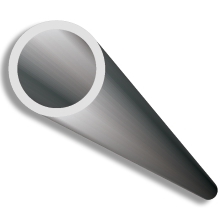One of the popular types of lightning rod is a vertical mast, which is a steel pipe of various lengths and cross-sections that effect the protection radius and lightning resistance. The cross-section of a lightning rod is chosen to avoid melting when lightning current acts on it with specific energy of 10 MJ/Ohm. This energy level corresponds to calculated data on the first current impulse of lightning for the first level of protection in accordance with SO 153-34.21.122-2003, which is higher than other levels of protection. In this way, the cross-sections are designed to receive the maximum possible lightning current. If the thermal and mechanical aspects are of significant importance, the cross-sectional area may be increased from 50 sq mm to 60 sq mm. This is relevant for particularly important facilities, where a lightning rod is to be working at all times, as well as for areas with a high thunderstorm rate.

Besides the cross-section, a very important characteristic is also the thickness of the steel pipe, which also effects the resistance of a lightning rod. According to GOST R IEC 62561.2-2014, the maximum wall thickness is stated in the requirements for lightning rods that take the shape of a continuous bar. If the rod is not straight, it must have the same characteristics. This is indicated in paragraph 4.3: "Items with appropriate dimensions, but of another shape can also be used":
|
Material |
Thickness, mm |
Cross-section, sq mm |
|
Galvanized steel |
2,5 |
50 |
|
Stainless steel |
2 |
50 |
|
Copper, tin-plated copper |
2 |
50 |
|
Aluminium alloy |
2,5 |
50 |
|
Aluminum |
3 |
70 |
As for steel, its permitted characteristics are stated in AD 34.21.122-87 and SO 153-34.21.122-2003 as follows: thickness — 4 mm and cross-section — 50 sq mm.
Use new models and choose the optimum protection for your projects!

